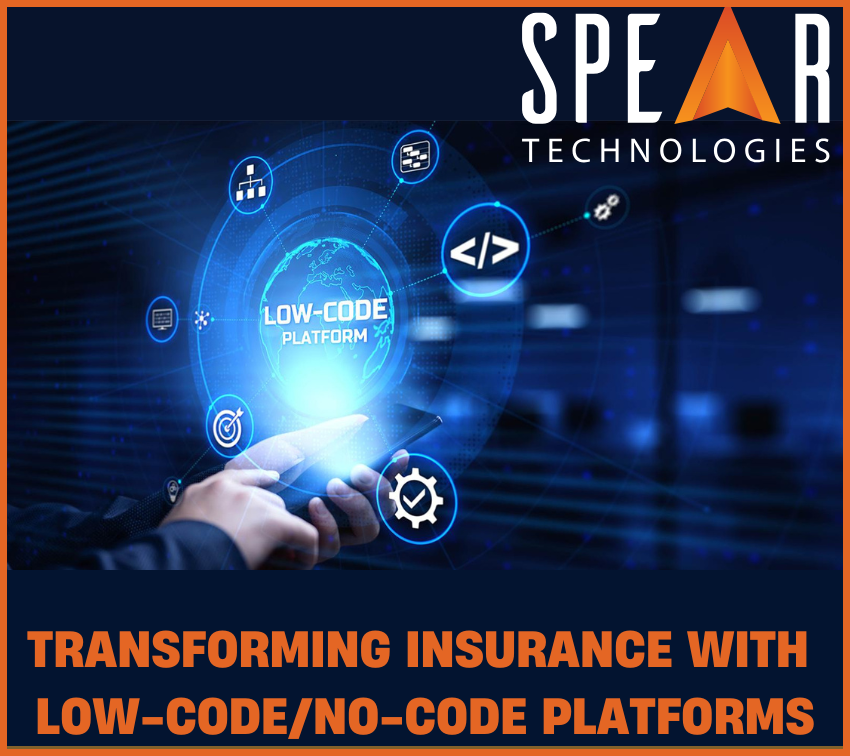Transforming Insurance with Low-Code/No-Code Platforms

As the insurance industry races toward digital transformation, carriers, TPA’s, MGAs and public entities are under pressure to modernize their core systems. Traditional software development can be time-consuming, expensive, and difficult to scale. Enter low-code/no-code insurance platforms: flexible, efficient, and cost-effective solutions that empower insurers to build and deploy applications faster than ever before.
In this article, we explore how low-code platforms for insurance are reshaping the industry—specifically within claims management, policy administration & billing, and agent & policyholder portals.
What Are Low-Code/No-Code Insurance Platforms?
Low-code/no-code development platforms enable business users and IT teams to create applications with minimal hand-coding or no coding at all. These platforms use visual development tools, drag-and-drop interfaces, and pre-built components to speed up software creation.
For insurers, this means:
- Accelerated time to market
- Greater business-IT collaboration
- Easier updates and scalability
- Reduced reliance on traditional software developers
Low-Code vs No-Code – What’s the Difference?
The terms Low-Code and No-Code sometimes seem to be used almost interchangeably, as there is much overlap between them, but there are some subtle differences. Low-Code enables automated code generation through visual building blocks like drag-and-drop and pull-down menu interfaces, allowing users to build and modify applications with minimal hand-coding.
No-code platforms go a step further, enabling business users—often business analysts or product managers—to build fully functional apps through drag-and-drop interfaces and pre-built templates. A good example would be business users creating workflows and business rules.
1. Claims Management: Faster, Smarter, and More Automated
Modern claims systems built with low-code platforms are transforming how insurers handle the entire claims lifecycle—from first notice of loss (FNOL) to settlement and subrogation.
Benefits:
- Rapid deployment of digital FNOL intake forms
- Automated claims triage and routing
- Easy integration with third-party data sources and APIs (e.g., weather data, vehicle history)
Example: An insurer uses a low-code/no-code platform to create a claims intake chatbot. Within days, the bot is live, collecting FNOL data 24/7, reducing adjuster workload, and improving customer satisfaction.
2. Policy Administration & Billing: Agility Meets Accuracy
Legacy policy administration systems are often rigid and difficult to customize. Low-code platforms for insurance enable teams to build flexible workflows, automate underwriting rules, and create tailored billing processes without months of development.
Benefits:
- Fast rollout of new insurance products
- Dynamic underwriting and rating logic updates
- Automated billing reminders and payment processing
Example: A mid-sized carrier launches a new usage-based auto insurance product. Using a low-code/no-code insurance platform, they design new workflows, rating engines, and billing rules in weeks rather than months—all with minimal IT involvement.
3. Agent & Policyholder Portals: Better Experiences, Built Faster
Today’s agents and policyholders expect intuitive, self-service digital experiences. Low-code/no-code platforms make it possible to launch customized portals without long development cycles.
Benefits:
- Drag-and-drop UI design for responsive interfaces
- Role-based access controls for agents and policyholders
- Seamless integration with CRM and policy data
Example: A regional insurer creates a bilingual policyholder portal using a low-code platform for insurance. Customers can view policies, make payments, and report claims—all in their preferred language—within a few weeks of project kickoff.
Why Low-Code/No-Code Is the Future of Insurance Technology
Whether you’re a large carrier modernizing legacy systems or an MGA launching niche products, low-code/no-code insurance platforms offer a compelling advantage:
- Speed: Launch products and portals faster
- Flexibility: Easily update workflows and rules
- Efficiency: Reduce cost and complexity
In a competitive and rapidly changing landscape, low-code/no-code isn’t just a nice-to-have—it’s becoming the industry standard.
Currently Live Use Case Leveraging SpearSuite™
A business user successfully deployed 12 AI models—without a developer—to automate tasks previously being done manually, and is now successfully reading invoices and indexing them to claim files, entering payments based on invoices, processing documents, and summarizing notes, leading to measurable efficiency gains.
Ready to see how low-code/no-code can accelerate your digital transformation? The future of insurance is flexible, agile, and built faster than ever before with SpearSuite™, the proven low-code/no-code end-to-end core P&C insurance software solution. Spear’s low-code/no-code cloud-native claims management, policy administration & billing, and agent & policyholder portals solutions feature customer-managed environments, seamless scalability, and embedded support for AI-driven capabilities.
Schedule a Demo to see how SpearSuite™ helps insurers move faster, adapt quicker, and drive measurable ROI – and learn how Spear empowers business users to configure workflows, add new data sources, and deploy AI models without the need for IT support.



